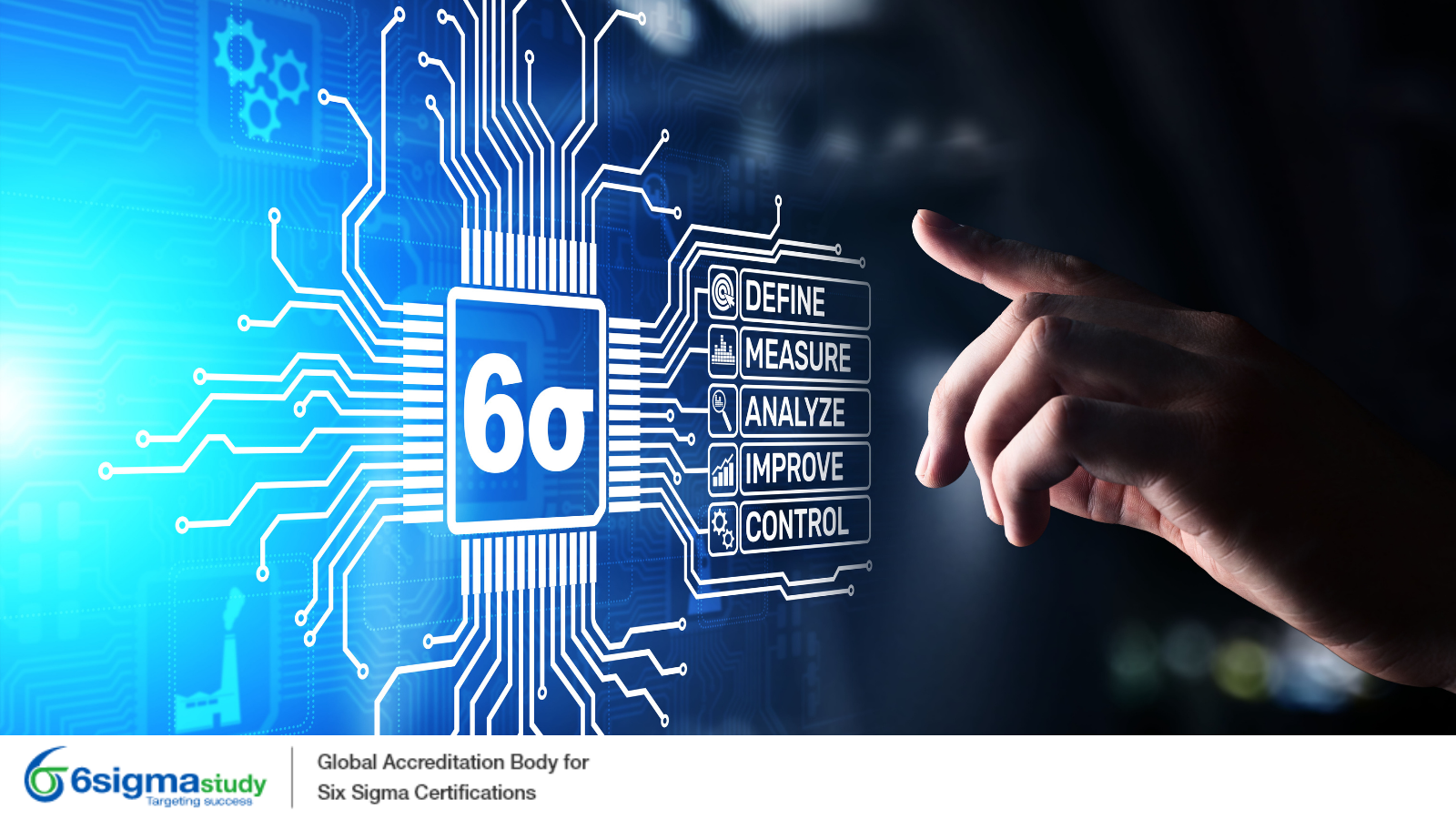Overview of Six Sigma DMAIC Process
Posted by 6sigmastudy® on July 16, 2021 | DMAIC & DMADV
Keywords: Six Sigma 6sigmastudy Six Sigma Yellow Belt (SSYB™) Six Sigma Green Belt (SSGB™) Six Sigma Black Belt (SSBB™) Lean Six Sigma Green Belt (LSSGB™) Lean Six Sigma Black Belt (LSSBB™) Free Articles Free Six Sigma Articles TQM Six sigma
Six Sigma aims to improve the performance of a process and increase customer satisfaction. The ‘six’ is represented by the Greek letter “σ,” “sigma” stands for the standard deviation from the mean. “Six Sigma” is a shorthand term for “six standard deviations from the “mean.”
The Six Sigma approach measures the number of defects in a process of an organization and helps to eliminate those defects by reducing variations in the process. The main goal of this approach is ‘continuous improvement’ in the process. To achieve this goal Six Sigma follows a well-designed model known as the DMAIC model.
The DMAIC model in Six Sigma is a well-defined quality management approach that aims at improving the effectiveness and efficiency of an existing process or product by continuous quality improvement and defect reduction. It is used when an existing product or process requires improvement to meet customer requirements.
DMAIC is an acronym for Define, Measure, Analyze, Improve, and Control. It is one of the most important parts of the Six Sigma initiative and also the Lean approach but it can also be used autonomously as a quality improvement procedure. Now let us discuss each phase of the DMAIC model.
Define: The main objective of this phase is to identify process bottlenecks and come up with effective opportunities for improvement. This phase focuses on mapping the process clearly, identifying the problems, and describing the project's focus, scope, and goal. It concentrates on the interests of all the stakeholders within the organization. The most important component of this phase is crafting the ‘Project Charter’. Some of the tools and techniques used in this phase include benchmarking, QFD (Quality Function Deployment), market research data, etc.
Measure: The major objective of this phase is to collect the data relevant to the scope of the project. In this phase, baselines are determined to compare improvement post-implementation of the solution. Data collections methods are developed, current state data are collected, examined, and process capability analysis is done. Using tools such as SIPOC, process maps, flowcharts, Ishikawa Diagrams, and Prioritization matrix helps achieve optimal results in this phase.
Analyze: This phase starts with an analysis of all the underlying causes of business inefficiency to assess the actual causes of process bottlenecks. It makes sure that improvements are brought about inherently by addressing the source of the issues. Then these causes are verified and validated by using tools and techniques such as ‘5 Whys’, FMEA, Tree Diagram, Gap Analysis, etc.
Improve: This phase should be implemented only after the appropriate implementation of the Measure and Analyze phases. Once the analysis is done and data is collected then one should focus on improving the process. Tools used in this phase to eliminate defects include Kanban, Poka-Yoke, 5S, DOE, etc.
Control: This is the final phase of the DMAIC model. In this phase, a detailed solution to the assessed issues is generated. It also ensures that improvements successfully implemented do not develop bottlenecks of their own over time. The new work standards are identified and documented. This phase continues until new opportunities arise, and then, the DMAIC model is implemented all over again. The essential tools used in this phase are SPC (Statistical Process Control), TPM, Process audit, etc.
Thus, we can say that the DMAIC model helps find solutions and provide optimal results to business processes. It is to be noted that since Six Sigma methodology is based on data, data integrity and accuracy are extremely important. The results of Six Sigma are dependent on the accuracy of the data. If the data are not accurate, then the application of the DMAIC model may not be successful.
To read more about the first phase, click here

